Common Questions About Agriculture
Accurate, well-sourced information
Helpful information is just a click away! We've made it easy to access accurate and well researched answers to some of the most common questions about agriculture.
If we take into consideration the entire lifetime feed intake of cattle, only 7% of their diet is made up of grain. The other 93% of the animal’s lifetime diet will consist largely of feed that is inedible to humans. For every 0.6 pounds of human edible protein cattle consume, there is a return of 1 pound of human edible protein in the form of beef. And 86% of what livestock eat globally is not in competition with human food. Cattle are ruminant animals, meaning they have a four-chambered stomach. This unique stomach system is found in other farm animals like sheep and goats. These animals have the ability to graze pastures and eat forages that humans and other animals with non-ruminant stomachs cannot digest due to the fiber content. Cattle diets also consist of feed that has been converted from grain milling and processing waste. Cattle are able to convert this into a high-quality protein for their diets.
No. There is no nutritional difference in the two colors of eggs. Both are good for you and part of a balanced diet. Different breeds of chickens lay different colored eggs. White Leghorns and Golden Comets are common breeds of egg-laying chickens. The White Leghorns lay white eggs, while the Golden Comets lay brown. Often, the color of the egg is the same as the color of the skin around the chicken’s ears. Depending on where you live, you might see more brown or white eggs. There are more brown eggs in the northeastern U.S., and more white eggs in the western U.S.
Not necessarily. Research shows that frozen vegetables can even be more nutritious than fresh vegetables! There are two reasons why. First, frozen vegetables are often left to ripen longer than fresh vegetables. As they ripen and mature, they become full of vitamins, minerals and antioxidants. Second, vegetables begin to lose their nutritional value as soon as they are harvested. Freezing slows this process. Scientists conducted a test on frozen and fresh vegetables. They found that vitamin C in fresh broccoli dropped by more than 50% within one week, but in frozen broccoli it dropped by only 10%. Those only eating fresh, raw vegetables may be missing out on the full nutritional benefit of eating vegetables from a variety of sources.
No. Living or once living things contain genes, whether they are genetically modified or not. “Gene” is the root word for genetics. Genes are located on chromosomes. They control the traits of an organism such as height, productivity, drought tolerance or pest resistance.
This general statement is a common misconception. Several naturally occurring pesticides are highly toxic, even carcinogenic. Copper sulfate is highly toxic and shown to cause liver disease. Rotenone is a plant extract found in some species within the pea family. It has received significant attention because of studies indicating a potential link to Parkinson’s disease. All pesticides, natural or synthetic, are reviewed and regulated by the Environmental Protection Agency (EPA).
A young horse is known as a foal. Horses come in many different breeds, including those classified as ponies. Ponies are small breeds of horses that, because of their size, appear much smaller when fully grown than larger breeds of horses. A horse’s height is measured in hands from the ground to the withers (the area on top of a horse between its neck and back). A hand represents 4 inches. The term horse is generally applied to one that is 14.2 hands (4 feet, 9 inches) or taller. A mature horse shorter than 14 hands is considered a pony by the industry.
America’s farms are still family farms. Family farms do incorporate for the same reasons that other businesses incorporate — taxes, structure, family home protection, etc. And yes, some family farms are becoming larger to take advantage of efficiencies of scale and to spread out their overhead costs. However, they are still considered family farms. Today, about 98% of U.S. farms are operated by families — whether individuals, family corporations or family partnerships.
Eating GMO products does not impact our genes. Our bodies digest the proteins and absorb the amino acids in food. The body cannot tell where a protein comes from and treats all proteins alike. This misconception may stem from the issue of allergic reactions. When a gene from one organism is transferred to another, there is a chance that a person could have an allergic reaction to the gene that was placed in the new organism. The World Health Organization explains that the “transfer of genes from commonly allergenic foods is discouraged.” They clarify that there have been no allergic effects found related to GM foods in general.
GMO seeds, like any others, can be saved and replanted. This misconception is a result of so-called ‘terminator genes’ that were researched in the 1900s to make seeds sterile, but they never made it into production. However, when farmers purchase GMO seed, they enter into contracts with seed companies and sign an agreement to purchase new seed each year and not save seed from their crops to plant the following year. This is a result of two factors, neither of which is related to the ability of the harvested GMO variety to sprout if planted. First, the contract’s provisions are binding and represent a business decision on the part of the farmer and the seed company’s desire to protect their variety and, certainly, to encourage future sales. Second, most commercial growers don’t save seed because the generation of harvested seeds will not uniformly contain all of the desired genetic traits of the original seed.
Yes. Food in the United States is very affordable. We only spend an average of 10% of our household income on food compared to 30% in India and 53% in Kenya. According to the USDA Center for Nutrition Policy, a family of four on a thrifty meal plan can eat at home for about $130 a week. American farmers work hard to provide consumers safe, healthy and wholesome food at these affordable prices. Additionally, consumers can follow tips from www.choosemyplate.gov about healthy eating on a budget. These include creating a game plan before grocery shopping, learning to correctly read food labels and researching budget-conscious meals.
Unfortunately, the answer is not as simple as a mere calculation. The United States uses more than one-third of its land for pasture. For more than 100 million people in arid regions, grazing livestock is their only source of livelihood. Half of the land area in the U.S. cannot be used for growing crops and is used as grazing land instead. If cattle, sheep and goats were not grazed on this land, it would be of no use for food production.
Animal agriculture plays an important role in feeding the growing population. Although it may appear that land used for livestock and livestock feed should be used for human food consumption, much of this land is not suitable for growing human food crops. 86% of what livestock eat globally is not in competition with human food. Many acres used for livestock grazing are made up of forages that can only be eaten by ruminant animals, like cattle, and converted to products for humans to eat. Additionally, animal agriculture provides the components humans need for a well-balanced, healthy diet and contribute a number of by-products including leather, ointments and creams for burns, insulin, paint brushes and sports equipment to name a few.









